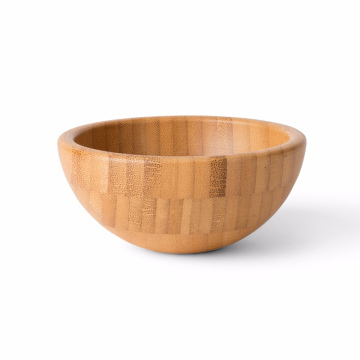Introduction to Donburi
Donburi, a cherished staple in Japanese cuisine, represents a harmonious blend of history, culture, and flavor. Originating from traditional dining practices, donburi refers to a bowl of steamed rice topped with a variety of ingredients, creating a meal that is nourishing and satisfying. Its inception can be traced back to the Edo period when the concept of serving food in a bowl gained popularity among the rising merchant class. As a result, donburi emerged as an accessible yet flavorful dish, embodying not only convenience but also creativity in its presentation.
The significance of donburi extends beyond mere sustenance; it showcases the diversity and richness of Japanese culinary arts. Each donburi is a personal expression of regional flavors, seasonal ingredients, and cooking techniques. This versatility has propelled the dish into various forms, enabling chefs and home cooks alike to innovate while preserving the essence of this time-honored meal. Today, donburi can be found in myriad variations, ranging from the richly flavored gyudon (beef donburi) to the delicate sashimi donburi, demonstrating its adaptability to different tastes and preferences.
At its core, a donburi consists of three essential components: rice, toppings, and sauce. The rice is typically short-grain Japanese rice, known for its sticky texture and ability to hold flavors. The toppings can vary widely, encompassing proteins like chicken, seafood, or vegetables, often cooked in flavorful broths or glazes to enhance their taste. Completing this delightful dish, sauces play a pivotal role in imparting depth and umami, transforming a simple bowl of rice into an extraordinary culinary experience. As we explore the various donburi varieties, it becomes clear that this beloved dish serves as a canvas for culinary creativity, marrying tradition with innovation.
One Bowl, Endless Flavors: Exploring Japan’s Donburi Culture
Explore the world of Donburi, a beloved staple of Japanese cuisine that combines rice, flavorful toppings, and savory sauces. Discover its rich history, cultural significance, and modern adaptations. Learn about popular varieties like gyudon, katsudon, and unadon, and find tips and recipes for making your own delicious donburi at home. Whether you're a seasoned chef or a curious beginner, this culinary journey will inspire you to embrace the versatility and creativity of this comforting dish.
The Art of Noodles: A Taste of Tradition
In the rich tapestry of Japanese gastronomy, noodles represent a fundamental and diverse category, encompassing several varieties that have captivated both locals and international enthusiasts alike. Among the most prominent types are ramen, udon, and soba, each with its own unique characteristics and culinary heritage.
Ramen, perhaps the most globally recognized, has roots that can be traced back to Chinese wheat noodles and was adapted to suit Japanese tastes during the early 20th century. Today, it is celebrated for its complex flavors and textures, which can vary greatly by region—Hokkaido’s miso ramen, for example, is known for its hearty, creamy broth, while Tonkotsu ramen from Fukuoka is revered for its rich, pork-based soup. The artistry of ramen lies not just in the broth but also in the toppings, which can include everything from sliced pork (chashu) to soft-boiled eggs and green onions.
Udon, with its thick, chewy texture, offers a contrasting experience to ramen. Traditionally made from wheat flour, salt, and water, these noodles are often served in a simple broth, allowing the natural flavors to shine through. Regional specialties, such as Sanuki udon from Kagawa, showcase the nuances of local climate and ingredients, often served with a light sauce or topped with tempura to enhance their delightful chewiness.
On the other hand, soba noodles, composed primarily of buckwheat flour, are deeply rooted in Japanese history and are renowned for their nutty flavor. They can be enjoyed hot or cold and are often served with a dipping sauce known as tsuyu. Soba-making is considered an art form in itself, and the use of locally sourced buckwheat can impart distinctive regional qualities, reflecting the terroir of the area.
Across Japan, the culture surrounding these noodles is equally significant, with local festivals celebrating noodle dishes, and families passing down traditional recipes through generations. The preparation processes for each noodle type can be meticulous, often involving hand-kneading or specific cooking techniques that highlight regional traditions and culinary expertise. Understanding the diverse world of Japanese noodles not only reveals a vital aspect of Japan's culinary identity but also underscores the artistry involved in their production and consumption.
Nigiri: Crafting the Perfect Sushi
Nigiri, a cherished form of sushi, epitomizes the harmonious relationship between rice and fish, making it a culinary favorite in Japan. The essence of nigiri lies in the balance achieved through the careful selection and preparation of ingredients. Generally, sushi rice, known as shari, must be cooked to the precise level of doneness and seasoned with a blend of vinegar, sugar, and salt. This seasoning enhances the rice's natural flavors and contributes to its ideal sticky texture, which allows it to hold together efficiently when molded.
The preparation of nigiri involves the artisanal technique of hand-shaping, where a sushi chef skillfully forms compact ovals of rice using their fingers. A thin slice of fresh fish, or neta, is placed atop each rice mound, creating a visually appealing dish that showcases the quality of both components. Freshness is paramount in this process; sourcing high-quality fish from reputable suppliers not only influences the taste but also aligns with Japan’s cultural emphasis on ingredient integrity.
When consuming nigiri, the etiquette is characterized by a few essential practices. Traditionally, diners are advised to dip the fish side into soy sauce rather than the rice to avoid overwhelming the delicate flavors of the rice. Wasabi is often applied between the fish and rice or served on the side, adding an extra layer of flavor without overdoing the spice. Moreover, regional variations across Japan offer an exciting exploration for enthusiasts, from the renowned Edomae nigiri in Tokyo to the distinct styles found in Osaka, each reflecting the locale’s unique geography and culinary history.
Ultimately, the process of crafting nigiri embraces artistry, precision, and respect for the ingredients, culminating in a dish that embodies the heart and soul of Japanese gastronomy.
Nori: The Seaweed Star of Japanese Cuisine
Nori, a type of edible seaweed, holds a venerable position in Japanese cuisine, renowned not only for its culinary applications but also for its impressive nutritional profile. Cultivated primarily along the coasts of Japan, nori is harvested from species of red algae, notably Porphyra, which thrives in the nutrient-rich waters. The cultivation process involves floating nets in tidal regions during specific seasons, allowing for optimal growth. This sustainable practice has been refined over centuries, contributing significantly to both local economies and culinary traditions.
In terms of nutritional benefits, nori is a powerhouse of vitamins and minerals, including vitamins A, C, and B12, along with essential trace elements such as iodine, calcium, and iron. Its low-calorie nature and high fiber content make it a favored choice for health-conscious consumers. Beyond its role as a sushi wrap, nori offers versatility in the kitchen, appearing in a variety of forms such as onigiri (rice balls) or as a crunchy snack. Roasted nori has gained popularity in Western countries, often flavored with sesame or salt, providing a healthy alternative to traditional snack foods.
Nori is available in various grades, typically categorized as “A,” “B,” or “C,” with grades influenced by factors such as color, texture, and taste. Grade A nori is favored for sushi due to its superior quality and vibrant green appearance, while lower grades may be more suitable for snacks or cooking. Proper storage is essential to maintaining nori’s freshness; it is best kept in an airtight container in a cool, dry place. Preparing nori is a simple process, often requiring only brief exposure to heat to enhance its flavor. Various recipes showcase nori's versatility, such as adding it to salads, soups, or as a seasoning for rice dishes, demonstrating its integral role in the culinary landscape of Japan.
The Cultural Significance of Japanese Cuisine
Japanese cuisine embodies a profound cultural significance that is intricately woven into the daily lives and traditions of the Japanese people. Noodles, nigiri, and nori serve as more than mere sustenance; they are reflections of Japan’s culinary philosophy, which emphasizes seasonality, balance, and presentation. Each dish is carefully crafted, showcasing the natural flavors of high-quality ingredients, which aligns with the Zen principles that have influenced Japanese gastronomy.
Noodles, for instance, are not only a staple food; they play a central role in various cultural rituals and celebrations. During New Year festivities, soba noodles are consumed to wish for longevity, while ramen has gained iconic status, representing the comfort of home-cooked meals. Likewise, nigiri sushi embodies the artistry of sushi-making, where each piece reflects the skill of the chef and the freshness of the ingredients, representing the timeless bond between people and nature.
Nori, a seaweed product, holds significance beyond its culinary uses, often symbolizing the sea’s bountiful offerings. It is essential in shaping sushi rolls and has its place in traditional ceremonies. These foods are laden with meanings and are often present in major festivals, where elaborate meals are prepared to honor ancestors and celebrate seasonal harvests.
Moreover, Japanese cuisine has had a substantial impact on global dining trends, with chefs around the world drawing inspiration from its aesthetics and flavors. The widespread popularity of sushi bars and ramen shops exemplifies how these elements have transcended borders, joining Japan's culinary legacy with multicultural influences. Thus, noodles, nigiri, and nori continue to be celebrated not only for their taste but also for their capacity to connect people to Japan’s rich cultural heritage.




